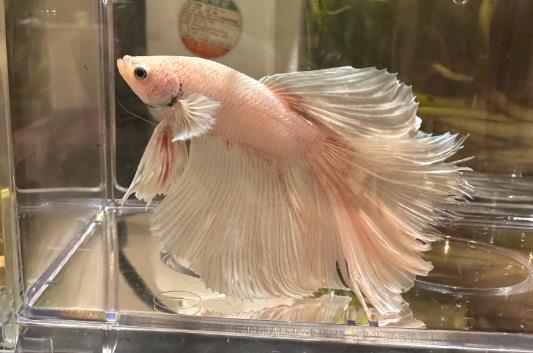The death of betta fish can stem from multiple factors, including environmental conditions, diseases, and improper care. Based on analysis, here are the common causes and solutions:

I. Environmental Factors
Fluctuating Water Temperature
Betta fish are sensitive to temperature changes. Large day-night temperature swings (such as in autumn) can easily trigger ich (white spot disease) or saprolegniasis (cotton mold). It’s recommended to use a heater to keep the water temperature stable at 25–28°C.
In summer, avoid placing the tank in direct airflow from air conditioners—sudden temperature drops may cause stress-related death.
Poor Water Quality
Elevated ammonia levels or deteriorating water quality are common causes of death. Regular water changes (1–2 times a week) are necessary, or a small filter can be installed.
Excessively high water levels (over 30 cm) may make it hard for injured bettas to breathe. Keep the water level between 20–30 cm.
II. Diseases and Parasites
Ichthyophthiriasis (Ich) / Saprolegniasis
White spots or cotton-like growths on the body are often caused by low temperatures or poor water quality. To treat, raise the water temperature to 30°C and use a salt bath (1% concentration) or ich medication.
Juvenile bettas are prone to parasites (e.g., "grenade worms") that nibble on their bodies. Maintain clean water and avoid overfeeding to prevent this.
Bacterial Infections
Female bettas during breeding may develop abdominal infections due to difficulty spawning or egg blockages. Isolate the fish for observation and maintain slightly acidic water (pH 6.5–7.0).
III. Improper Care
Feeding Issues
Overfeeding leads to leftover food rotting and bacterial growth. It’s best to feed small amounts multiple times a day and remove uneaten food promptly.
During the breeding period, supplement with high-protein foods (e.g., brine shrimp) to prevent female bettas from dying of exhaustion.
Aggression in Mixed Tank Setups
Bettas are highly territorial—housing them with other bettas often results in fatal fights. They should be kept alone or strictly separated.
Even in separate tanks, if a neighboring betta has vibrant colors (e.g., bright red), weaker fish may die from stress due to constant agitation.
IV. Other Considerations
Breeding Risks: When female bettas carry eggs, provide hiding spots to avoid male aggression. Isolate the female immediately after spawning.
Symptom Monitoring: If bettas frequently gasp at the surface, clamp their fins, or show abnormal coloration, check water quality and health status immediately.
By adjusting the environment, standardizing feeding, and treating diseases promptly, the mortality rate of bettas can be significantly reduced. If problems persist, test water parameters (e.g., ammonia levels, pH) or consult professional aquarists.
